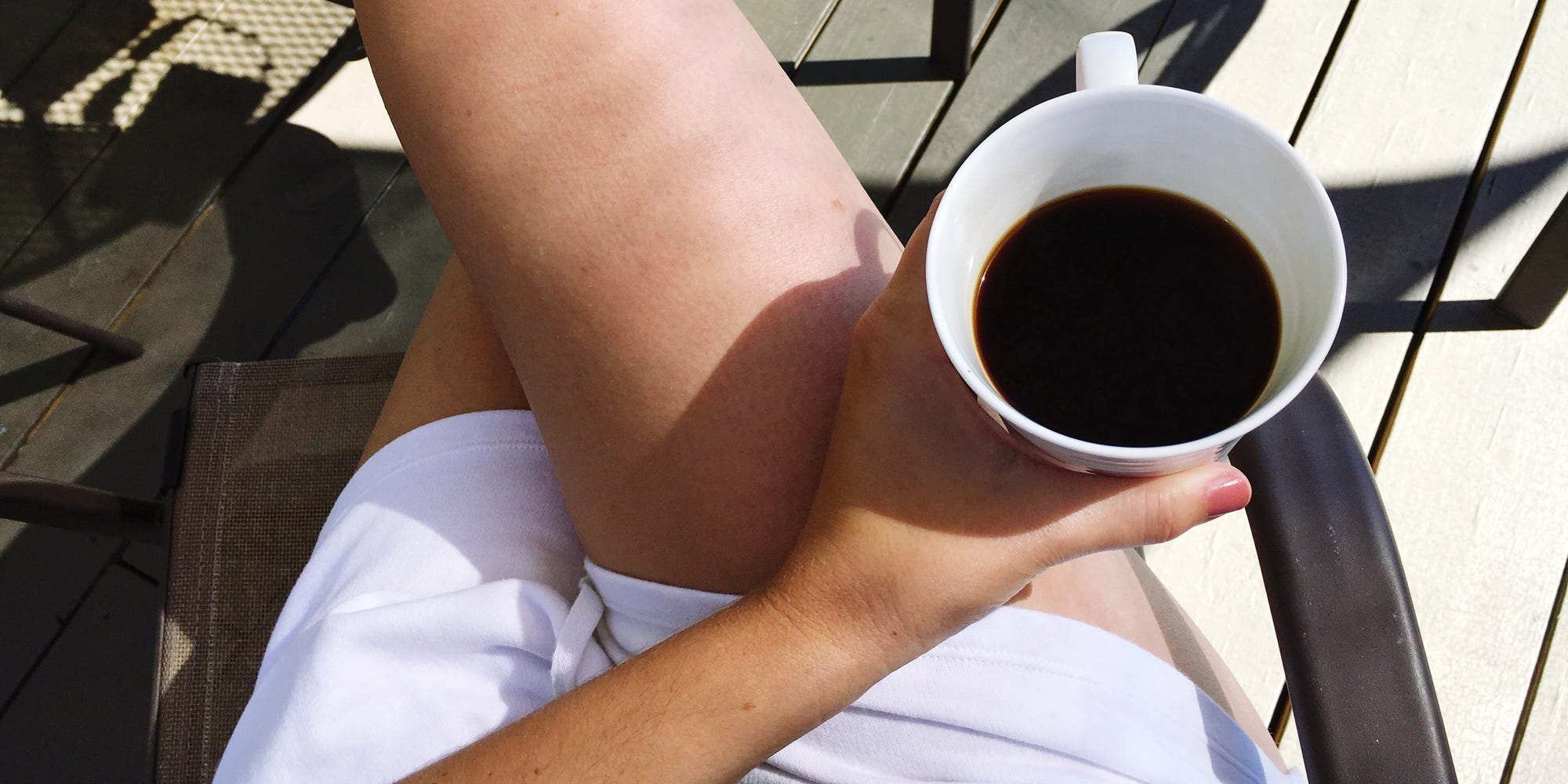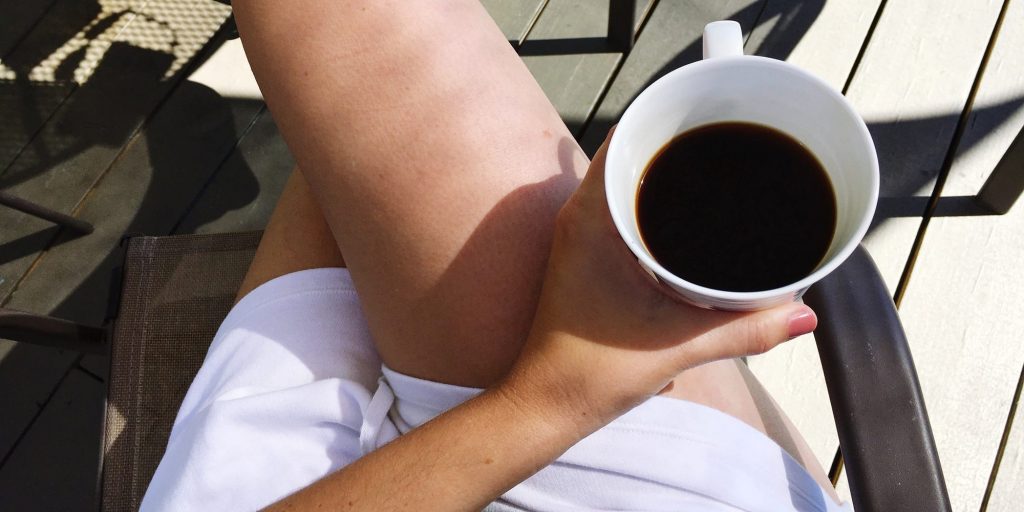
- Holding your pee can be uncomfortable but distracting yourself with games and singing can help temporarily.
- Changing position, like crossing and uncrossing your legs, or doing the "pee dance" can also help.
- When you do get the chance to urinate, relax and give your bladder time to empty completely.
Most people pee about eight times a day and once at night. That often there's bound to be a time, or two, when the urge strikes at an inconvenient time like when you're planning an epic filibuster or you're in traffic for hours.
"Sometimes we have no choice but to hold urine past our urge to urinate," says Brian Norouzi, MD, a urologist with Providence St. Joseph Hospital.
The brain and bladder both control urination, so — within limits — healthy adults can choose when and where they go. To buy yourself time, try these tips for how to hold your pee when there's no other choice.
1. Distract yourself
The best tried and true way to hold your pee is by distracting yourself, says Karyn Eilber, MD, a urologist with Cedars Sinai. A good conversation, a heated debate, or a favorite song can all take your mind off the physical sensation of needing to pee, in the same way that distraction can help with pain, especially for kids.
2. Play a game
If chatting or singing is no longer doing the trick, try to heighten your distraction by getting competitive. Research has found that electronic gaming can reduce painful sensations more than passive distraction like watching a show. This could be anything from a guessing game, trivia, a word puzzle, a video game, a card game, or anything in between.
3. Change positions
There's a reason many of us do the "pee dance" when we've got to go. Moving into a different position can alleviate pressure on the bladder, making the urge less severe, says Norouzi.
He recommends elongating your torso, but not stretching the abs too much, which can increase pressure. Some people find crossed legs helps, while others say this makes the sensation worse. Experiment to find what works for you.
4. Fart. Yes, fart.
Speaking of pressure on the bladder — passing gas can reduce internal pressure and give you more time to reach a toilet, says Norouzi. Just keep in mind this requires some careful muscle control.
You need to relax your anal spinchter muscles to release a fart while keeping the urethral sphincter — the muscle that controls the flow of urine out of the bladder — closed tight.
5. Turn down the A.C.
Being too cold can cause your body to produce more urine. This is a condition known as cold diuresis, which happens in response to blood pressure changes in very cold temperatures where you're at risk for hypothermia.
Still, adjusting the temperature even when it's not that cold certainly won't hurt, and may give you a much-needed distraction.
6. Lay off the water
Ultimately the best way to avoid needing to hold your pee is to plan ahead when you know your bathroom access will be limited, says Eilber.
Excess water — more than your body needs to function — is passed very quickly, within 5 to 20 minutes. If you're preparing for a long car ride or speech, avoiding fluids in the hour or so before you depart can be helpful.
A regularly hydrated person should be able to go at least 3 hours without peeing, she says.
7. When you have the chance, go even if you don't think you have to
When you have access to a toilet — like at a rest stop on a road trip — it's a good idea to go, even if you don't think you need to. This is known as preemptive voiding.
By allowing your bladder to empty completely, you'll be able to wait a longer time until your next bathroom stop.
8. Train your bladder
If you often find yourself in situations where you need to hold your pee, you might benefit from bladder training, says Eilber. This involves urinating at set intervals, like every hour.
Each week, you increase the time by five minutes, until you're peeing at an interval that is convenient and healthy for you.
"You're physically stretching out the muscle," Eilber says, allowing the bladder to hold more urine comfortably. Allow about six weeks to see a difference.
9. Pee completely
When you finally reach a toilet, you might have trouble letting urine flow. That's because your pelvic floor muscles have been tightly clenched to hold pee in, says Norouzi.
Allow yourself 5-10 minutes on the toilet to fully let your muscles relax and ensure that your bladder is fully emptied, he says.
Is it bad to hold your pee for a long time?
It's ok to hold your urine in emergency situations, but you shouldn't make it a habit, says Norouzi.
Delaying urination can weaken your bladder muscles and leave you prone to infections like urinary tract infections. Plus, sooner or later your bladder won't be able to hold any more urine.
"At some point it's not mind over matter. You might just wet yourself," say Eilber.
How much pee can a bladder hold?
The average adult bladder can hold 300-400 milliliters (ml) of urine. That's about 10-13 fluid ounces or more than a cup of liquid.
But you can expect to produce 800-2,000 ml of urine each day. Hence the need to pee multiple times throughout the day.
Insider's takeaway
Needing to pee when there's no toilet available can leave you feeling desperate. Distracting yourself, playing a game, changing positions, changing temperature, and even farting might temporarily help, but sooner or later you risk having an accident if you delay urinating.
There's no danger from occasionally holding your pee, but doing so regularly can affect your muscle control and lead to infection. Plus, it's just uncomfortable, says Eilber.
"There's nothing wrong with postponing if you have to," she says. But why wait?
Dit artikel is oorspronkelijk verschenen op z24.nl
